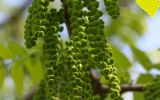17 Most Common Walnut Tree Types (with Pictures to Identify)
Walnut trees belong to the Juglandaceae family of deciduous trees. Each type of walnut tree has distinctive features, such as the size and shape of its leaves, bark, and fruits. To make identification easier, this article will provide pictures and handy tips to help you distinguish the different types of walnut trees.
The most common walnut tree types include Black Walnut, English Walnut, Butternut, Japanese Walnut, Northern California Black Walnut, Southern California Black Walnut, Andean Walnut, Arizona Black Walnut, Manchurian Walnut, Texas Walnut, Chandler Walnut, Franquette Walnut, Hartley Walnut, Fernor, Apollo, Pedro, and Lara Walnut.
The black walnut tree is known for its tall, straight trunk and deeply furrowed bark, while the English walnut tree is known for its spreading canopy and compound leaves. As you read through this article, you'll gain a deeper understanding of the different walnut types and their own unique characteristics that set them apart from each other.
Understanding the 17 most common walnut tree types is crucial for selecting the right variety that best suits your land and farming goals, as you delve into starting your own walnut farm from scratch.
Summary
- The black walnut (native to North America), the English walnut (native to Europe), the Chinese walnut (native to China), and the South American walnut (native to South America) have unique characteristics that make them valuable for timber, nuts, and landscape aesthetics.
- The nuts produced by different types of walnut trees vary in size, flavor, and nutritional content, making them suitable for a wide range of culinary uses and providing essential nutrients like healthy fats, protein, and minerals.
- All types of walnut trees produce wood that is highly prized for its strength, durability, and aesthetic appeal, making it a popular choice for furniture making, woodworking, and commercial purposes, contributing to the economic value of these trees.
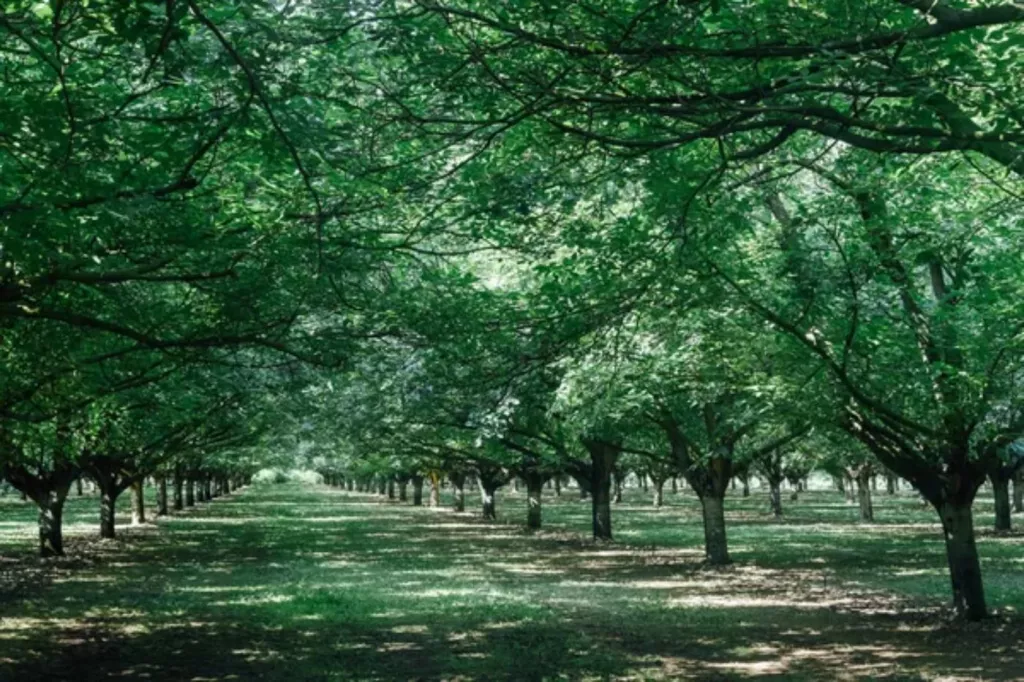
On this page:
17 Most Common Types of Walnut Trees
The table below shows the 17 most common types of walnut trees:
| Walnut Type | Latin Name |
|---|---|
| Black Walnut | Juglans nigra |
| English Walnut | Juglans regia |
| Butternut | Juglans cinerea |
| Japanese Walnut | Juglans ailantifolia |
| Northern California Black Walnut | Juglans hindsii |
| Southern California Black Walnut | Juglans californica |
| Andean Walnut | Juglans neotropica |
| Arizona Black Walnut | Juglans major |
| Manchurian Walnut | Juglans mandshurica |
| Texas Walnut | Juglans microcarpa |
| Chandler Walnut | Juglans hindsii x Juglans regia |
| Franquette Walnut | Juglans regia x Juglans hindsii |
| Hartley Walnut | Juglans regia x Juglans hindsii |
| Fernor Walnut tree | Juglans regia x Juglans hindsii |
| Apollo Walnut tree | Juglans regia x Juglans hindsii |
| Pedro Walnut tree | Juglans regia x Juglans hindsii |
| Lara Walnut tree | Juglans regia x Juglans hindsii |
Black walnut tree (Juglans nigra ) is a valuable timber-producing species
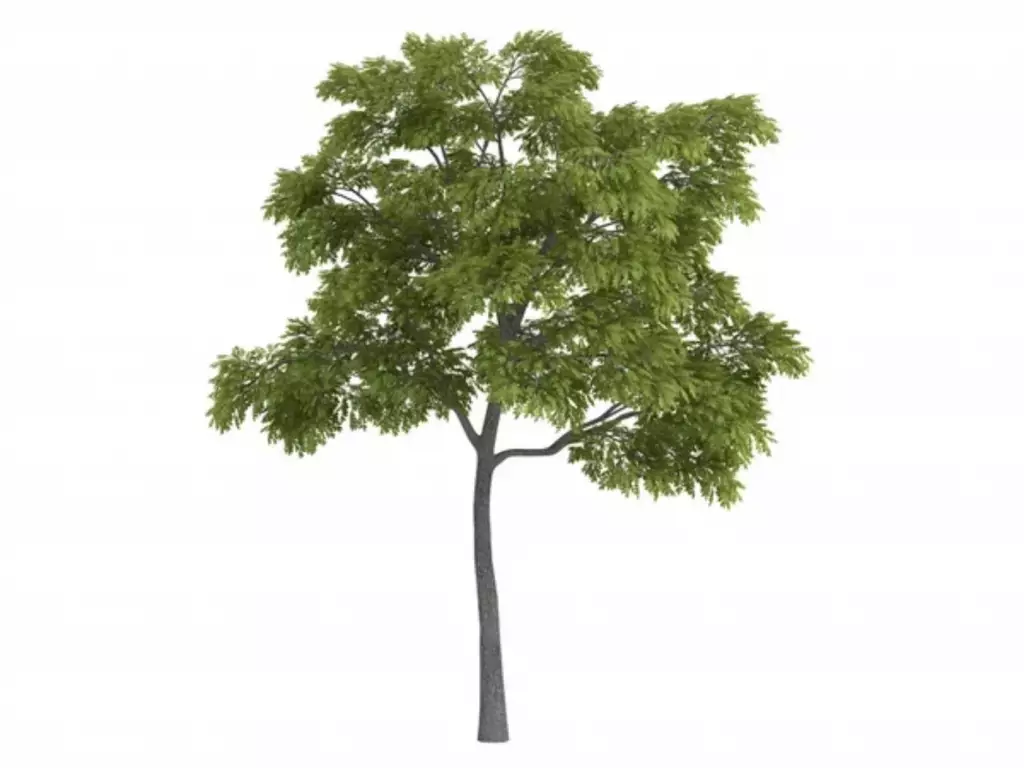
The Black Walnut (Juglans nigra) is a native nut tree to North America, known for its valuable timber and rich, flavorful nuts. This walnut tree variety thrives in full sun and well-draining soil.
Its compound leaves are long, adding a graceful appearance to the tree. The bark of the black walnut tree has deep fissures, giving it a unique and rugged look.
The dark brown wood produced by black walnut is highly sought after for many applications, including furniture and lumber. Its versatile timber has made it a popular choice among artisans and wood-crafters.
They yield nuts with hard shells, which can be a bit challenging to crack, but it's worth the effort once you taste the rich, flavorful nutmeat inside!
Black walnut nuts are fairly large, with their dark brown shells protecting the precious contents. They can be sold for around $8 to $10 per pound.
English walnut tree (Juglans regia) is a popular nut-bearing species
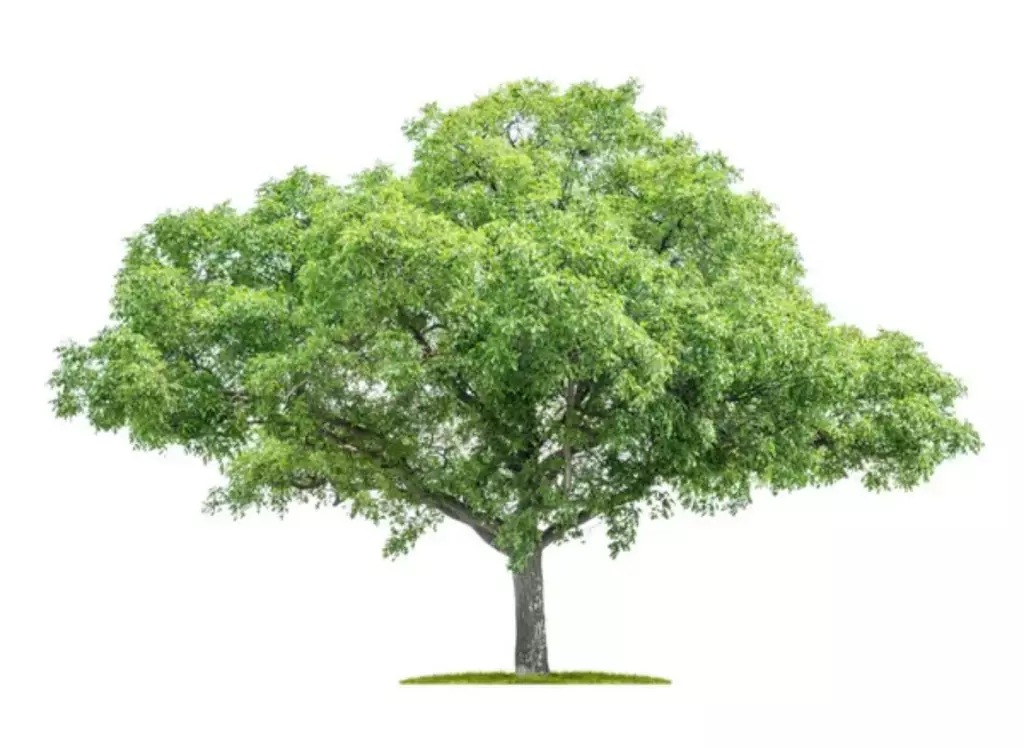
The English Walnut Tree (Juglans regia) is native to Europe and has distinctive features that set it apart from other walnut trees. Known for their gorgeous foliage, these trees provide a wonderful addition to any landscape, especially in parks or gardens.
They thrive in well-draining soil and love to soak up the sun. As the tree matures, you'll notice its leaves changing to a beautiful golden hue in the fall, making it a dynamic statement piece in your yard. These trees have an average lifespan of about 150-200 years.
This type of walnut is characterized by its thin shell and delightful flavor, making it a popular choice for snacking and cooking. To enjoy this tasty nut at home, you can simply crack open the shell and indulge in the sweet and slightly mild flavor packed within.
Butternut walnut tree (Juglans cinerea ) is a native North American walnut variety
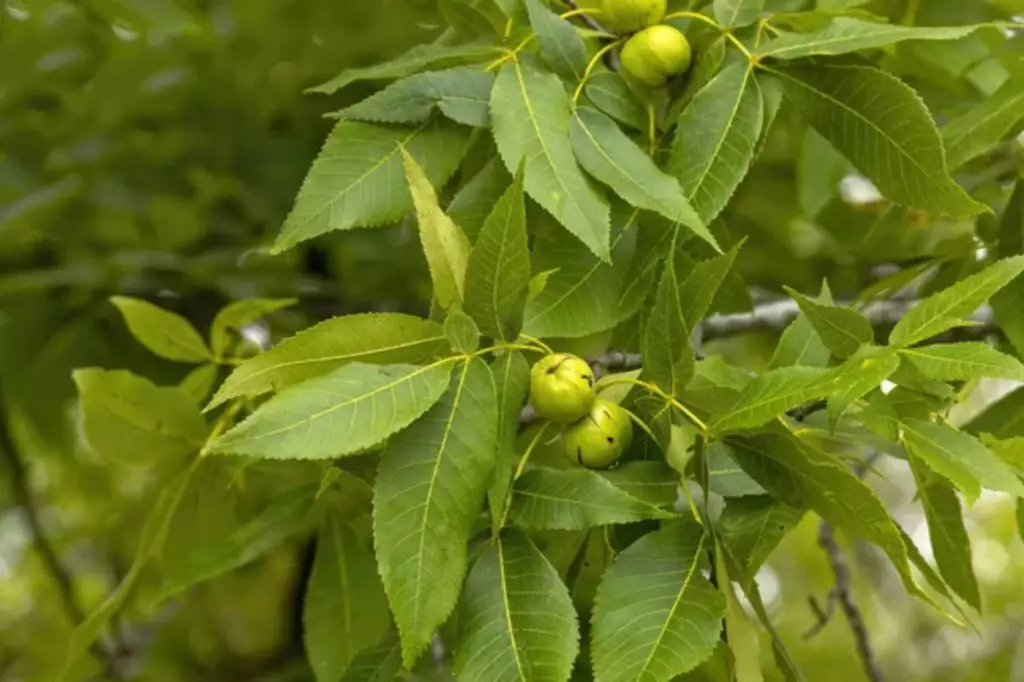
The Butternut walnut, also known as the butternut, is a beautiful deciduous tree native to North America. Its distinct features make it an attractive option for various landscapes.
With its pinnate leaves and rich, tasty nuts, the butternut tree holds a special place among nut-bearing trees. During springtime, these trees come to life, with their stunning leaves budding in shades of green and adding a lively touch to your surroundings.
These pinnate leaves typically consist of 11 to 19 leaflets per leaf, giving the branches a feathery appearance. As summer fades to fall, you'll notice that their leaves turn a wonderful golden yellow before they are shed for winter.
These trees can produce up to 30 pounds of nuts per year, although the nuts are smaller than those produced by the English Walnut tree. They typically begin nut production around 10 years old and reach peak production at around 30 years.
Surrounded by a hard, oblong shell, cracking open a butternut walnut reveals the delicious edible nut inside. These nuts can be eaten straight from the shell or added to various dishes for a delightful taste experience.
Being a deciduous tree, the butternut walnut will require some care throughout the year. Regular pruning can help maintain a healthy tree and ensure bountiful harvests of delicious nuts.
You may need to keep an eye on the branches to prevent overgrowth and remove any dead or dying branches when necessary.
Japanese walnut tree (Juglans ailantifolia) is an ornamental walnut variety
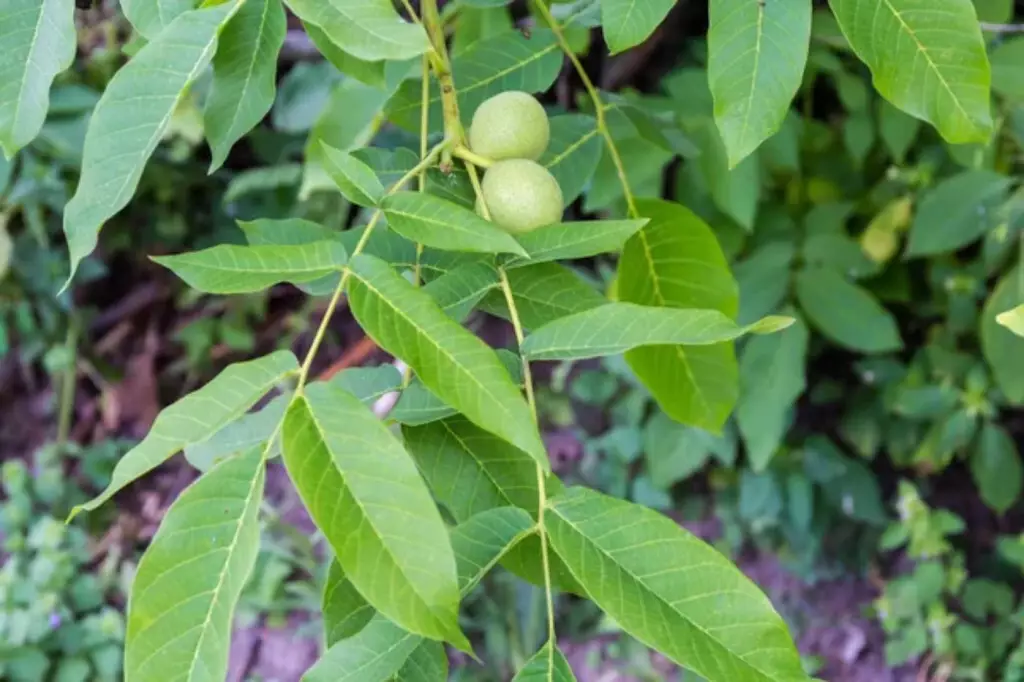
The Japanese Walnut tree, native to Japan, is a beautiful and unique addition to any landscape. With leaves that fall during autumn, this tree can offer a stunning burst of color to your surroundings.
The bark of this tree is typically light gray to dark brown and has a distinct pattern that makes it stand out from other walnut varieties.
When planting a Japanese Walnut tree in your garden, perhaps consider the following suggestions:
- Choose a location with well-draining soil and plenty of sunlight.
- Plant the tree at least 15-20 feet away from other trees and structures to allow for proper growth. You can check this article to know the proper spacing and density for walnut trees.
Enclosed in a hard, round shell, the nutmeat of this type of walnut is not only delicious, but it is also rich in nutrients. Here are some interesting facts about these walnuts:
- They have a slightly sweeter taste compared to other walnut varieties, making them perfect for both savory and sweet dishes.
- Their shell can be light gray to dark brown, with a smooth surface and sometimes a bit of a shine.
- The nutmeat is rich in healthy fats, protein, and essential minerals like magnesium and potassium.
Northern California black walnut (Juglans hindsii) is large walnut species native to California
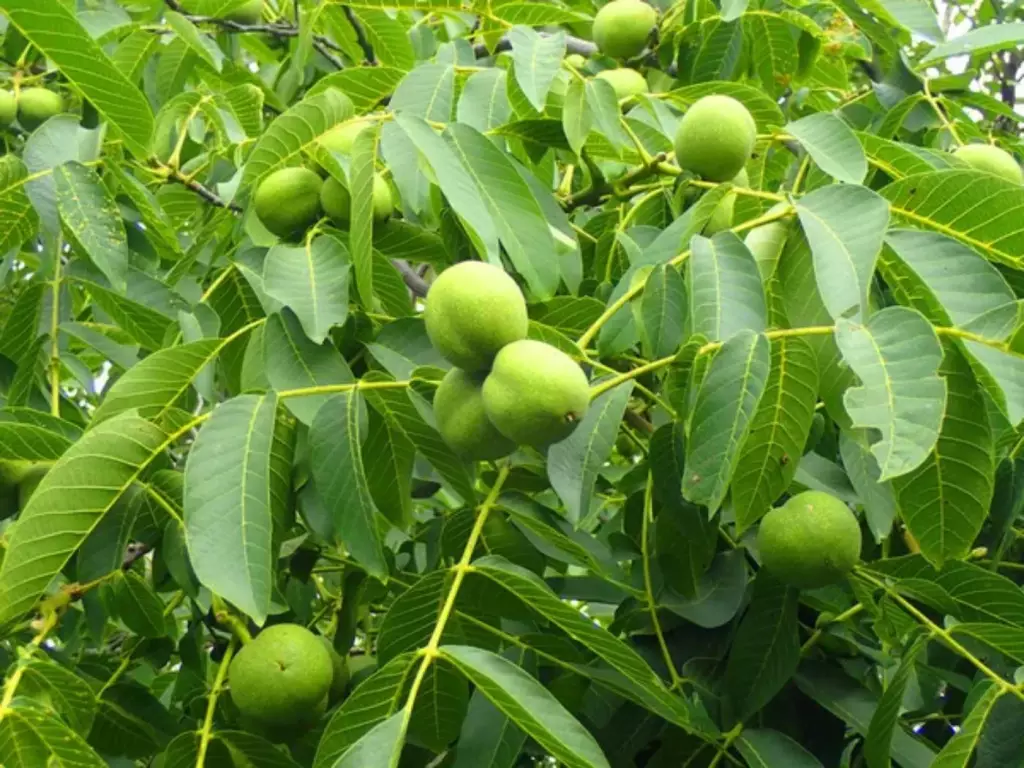
The Northern California black walnut is a species of walnut tree native to California. It is a deciduous tree that can grow up to 100 feet tall and is known for its valuable timber and edible nuts.
This tree has a broad, spreading canopy with compound leaves typically consisting of 15-23 leaflets, and are arranged alternately on the stem. The leaflets are lance-shaped with serrated edges and a pointed tip.
The bark of the tree is dark brown to gray in color with deep furrows and ridges. The tree produces large, round nuts with a hard, thick shell that encases the edible kernel inside.
When mature, the nuts drop to the ground and can be collected for consumption or propagation. Additionally, the wood of this tree has a rich, dark brown color with a distinctive grain pattern, making it easily recognizable for woodworking purposes.
Southern California black walnut (Juglans californica) is another native Californian walnut species
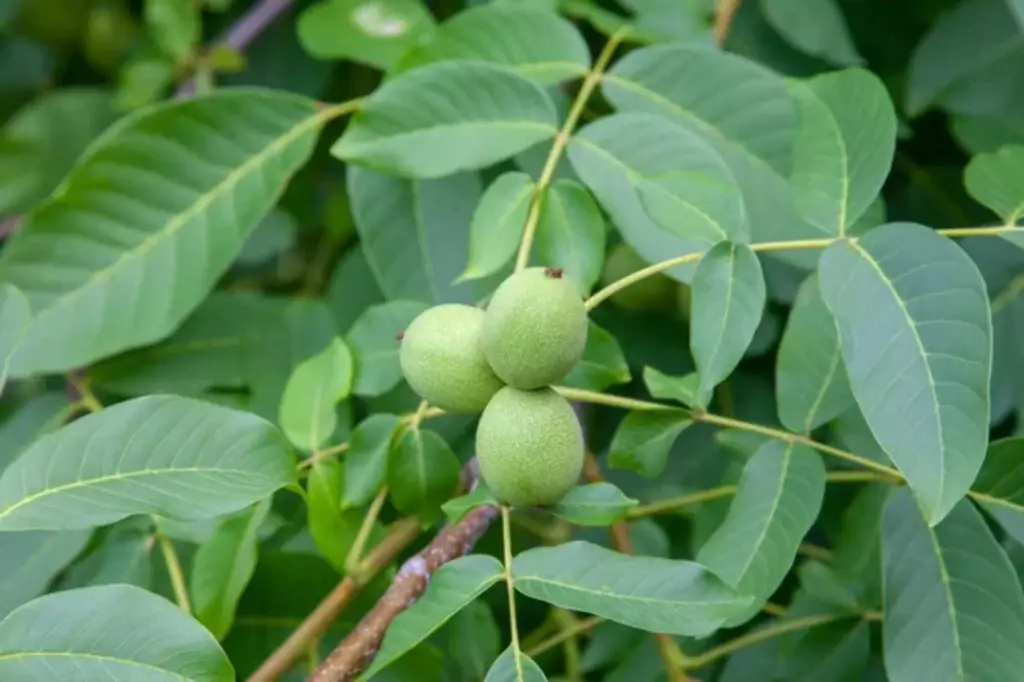
The Southern California black walnut is a species of walnut tree native to Southern California and Baja California. It is a small to medium-sized deciduous tree with a height ranging from 15 to 50 feet.
The leaves are compound, typically consisting of 5 to 9 leaflets, and are arranged alternately on the stem. The leaflets are oval-shaped with finely toothed edges. The bark of the tree is dark brown and deeply furrowed.
The tree produces small, round nuts with a hard shell that encases the edible kernel inside. The nuts are smaller in size compared to other walnut species.
The wood of the tree is durable and has been historically used by indigenous peoples for a variety of purposes, including tool-making and basket weaving. In fact, a single Southern California black walnut tree has an estimated value ranging from $200 to $500.
Andean walnut tree (Juglans neotropica ) is a South American walnut species
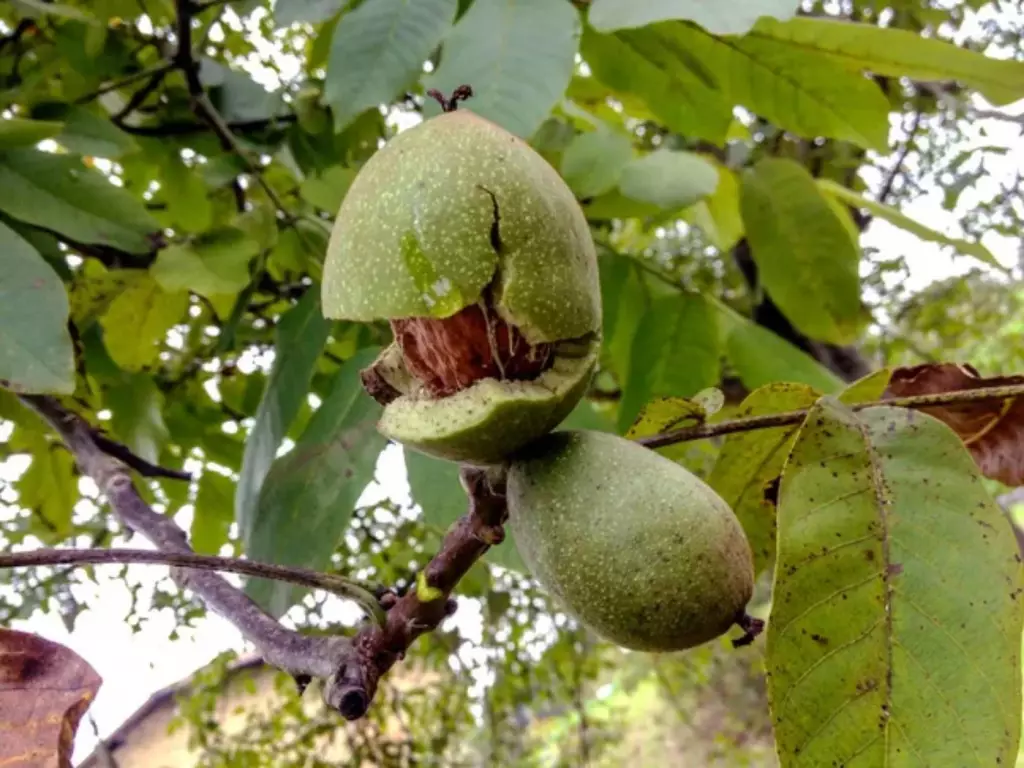
Found in South America, the Andean Walnut is a slow-growing tree with grooved, red-brown bark and an oval-shaped canopy. It has large leaves that consist of pointed, serrated leaflets arranged in pairs.
Its flowers are monoecious, meaning that both male and female flowers occur on the same tree, allowing it to self-pollinate.
Arizona black walnut (Juglans major ) trees are drough-tolerant species
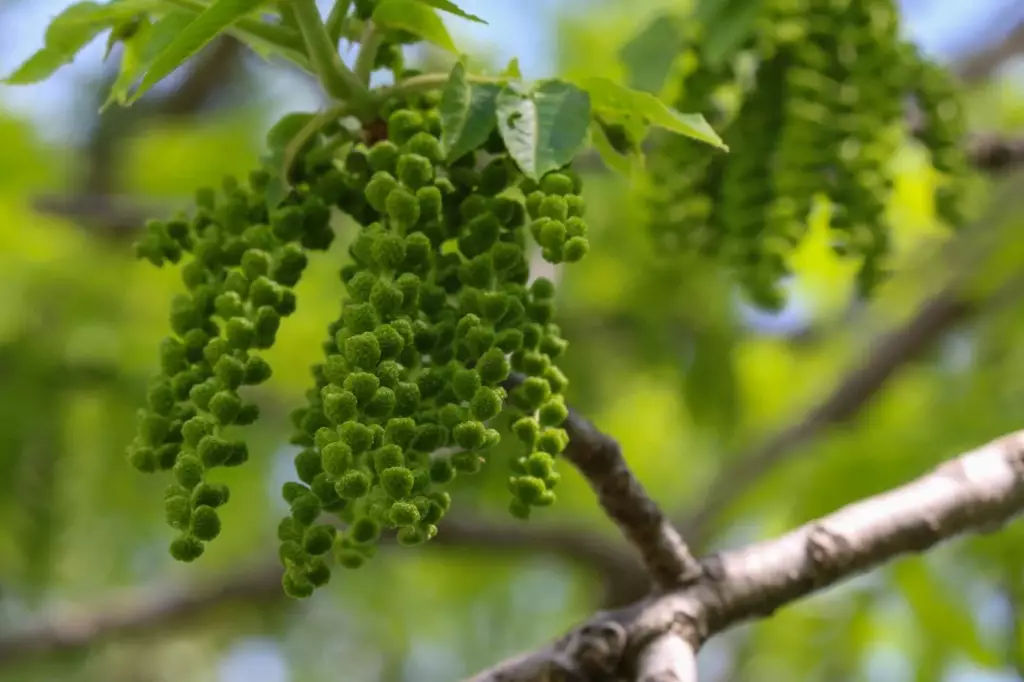
The Arizona Black Walnut is native to the southwestern United States, particularly Arizona. This walnut tree is similar in size to the California Black Walnut, growing up to 50 feet tall.
It thrives in warmer climates and has a narrower canopy than other walnut species. It is well adapted to the arid conditions of the southwestern United States and northern Mexico, making it more drought-tolerant compared to other black walnut species.
Additionally, its nuts are typically smaller and have a thinner shell compared to those of other black walnut species.
Manchurian walnut tree (Juglans mandshurica) is a coldhardy walnut species
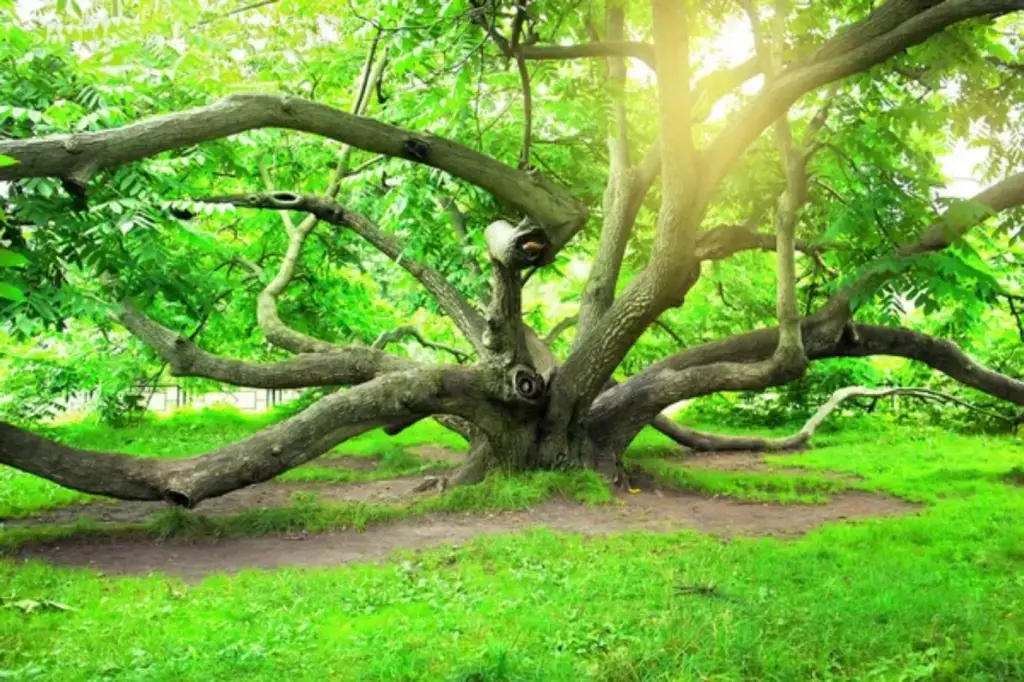
Native to China, the Manchurian Walnut is a cold-hardy species that can tolerate temperatures well below freezing. It has a rounded canopy which provides a good amount of shade.
The tree can grow up to 60-80 feet tall, making it a popular choice for large landscapes. It typically has a rounded canopy, providing ample shade, and can reach heights of 60-80 feet, making it a striking addition to large landscapes.
In addition to its ornamental value, the Manchurian walnut tree produces edible nuts that are similar in flavor to English walnuts. These nuts are not only delicious but also packed with nutrients, including omega-3 fatty acids and antioxidants.
Furthermore, the wood of the Manchurian walnut tree is highly prized for its strength and durability, often utilized in furniture making and woodworking.
Texas walnut tree (Juglans microcarpa) is another heat-resistant walnut type
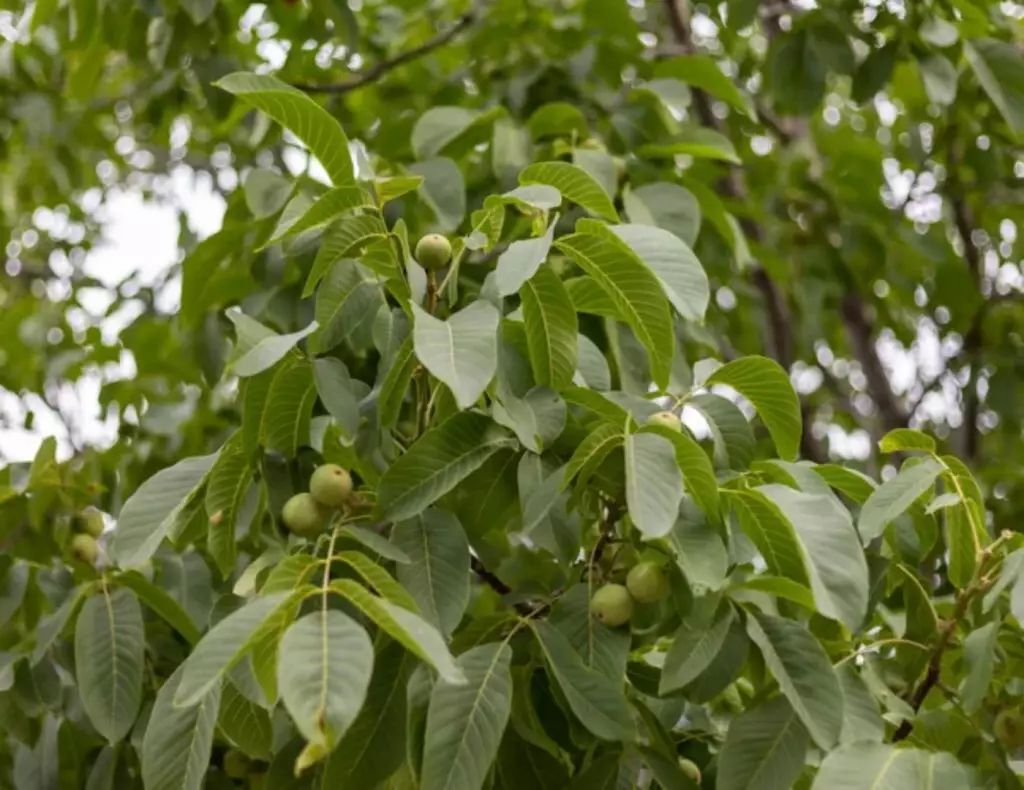
The Texas walnut tree, scientifically known as Juglans microcarpa, is a species native to the central United States, particularly Texas, Oklahoma, Kansas, and Nebraska. It is a member of the Juglandaceae family and is commonly referred to as the little walnut, Texas black walnut, or river walnut.
This deciduous tree is known for its medium to large size, reaching heights of up to 50 feet with a spread of 30 to 40 feet. It typically has a broad, rounded crown and a straight trunk. Its bark is dark brown and deeply furrowed, adding to its aesthetic appeal.
The leaves of the Texas walnut tree are pinnately compound, consisting of 11 to 19 leaflets that are finely toothed along the margins.
In the spring, the tree produces small, inconspicuous greenish-yellow flowers that are borne in drooping catkins. These flowers give way to round, smooth-shelled nuts that are encased in a thick, green husk.
Texas walnut trees thrive in well-drained, deep soils and are commonly found in bottomlands, along streams, and in wooded areas. They are relatively low-maintenance and can tolerate a range of soil types, including loamy, sandy, and clay soils. Additionally, they are tolerant of drought conditions once established.
Chandler walnut tree (Juglans hindsii x Juglans regia) has a broad, spreading canopy
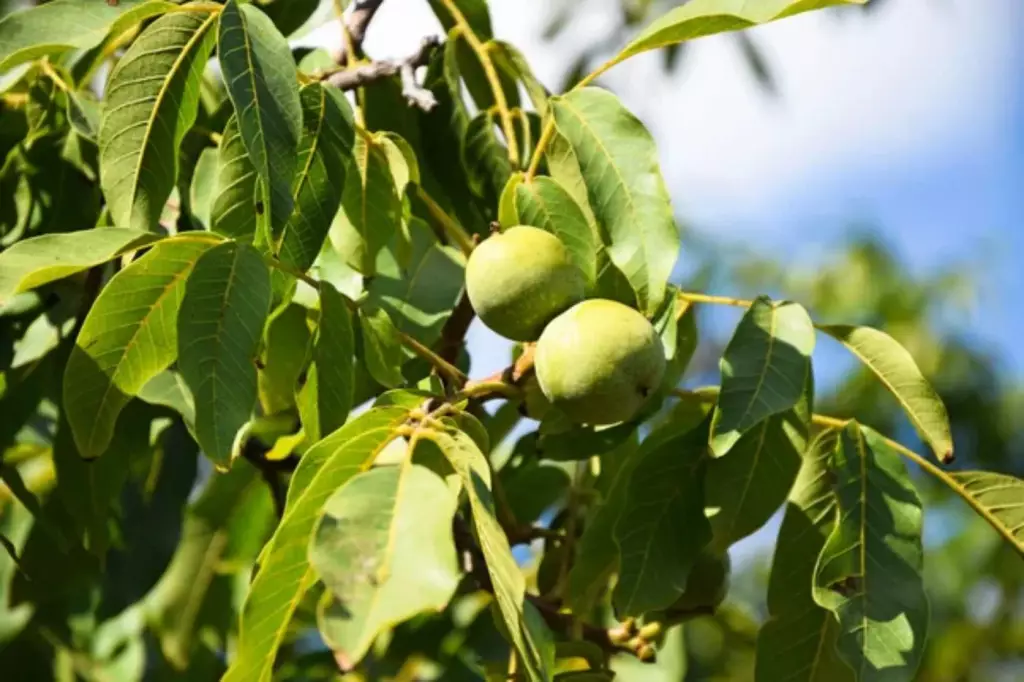
The Chandler Walnut is a hybrid tree that is a cross between the Northern California black walnut (Juglans hindsii) and the English walnut (Juglans regia). This hybridization has resulted in a tree that exhibits desirable traits from both parent species.
The Chandler Walnut tree is valued for its high-quality wood and delicious nuts. It is cultivated primarily for its commercially important nuts, which are known for their large size, excellent flavor, and thin shells.
An acre of mature Chandler walnut farmland can generate upwards of $4,000 per year.
In terms of appearance, the Chandler Walnut tree typically has a broad, spreading canopy with attractive foliage. The leaves are compound and consist of several leaflets. The tree produces catkins in the spring, which give way to the development of the walnuts later in the season.
In addition to its agricultural significance, the Chandler Walnut tree also provides environmental benefits. Its large, leafy canopy offers shade and contributes to the overall aesthetics of the landscape. Furthermore, walnut trees play a role in supporting biodiversity by providing habitat and food for various wildlife species.
Franquette walnut trees are known for their vigorous growth
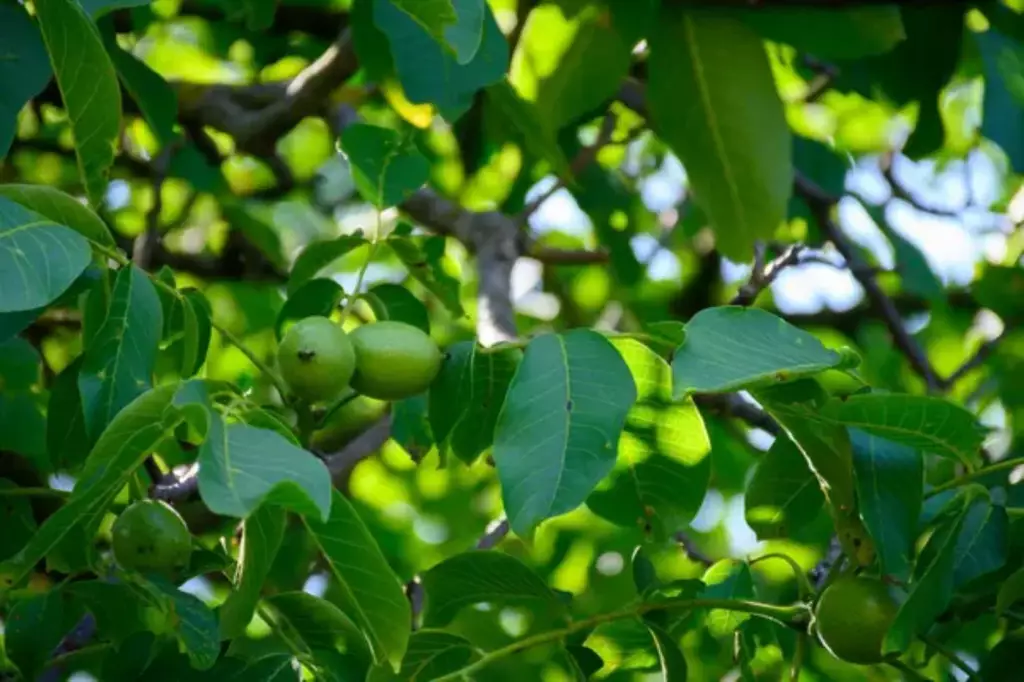
The Franquette walnut tree is a popular variety of walnut trees known for its high-quality nuts and hardy nature. It is a cultivar of the common walnut tree (Juglans regia) and is widely grown for its delicious, thin-shelled nuts.
Franquette walnut trees are known for their vigorous growth and large, spreading canopy, reaching heights of 40-60 feet at maturity, with a similar spread.
The leaves are compound and can grow up to 24 inches in length, providing ample shade during the summer months. The tree's bark is smooth and light brown when young, eventually developing deep furrows and ridges as it ages.
The nuts of this tree are large, with a thin shell that is easy to crack, making them highly desirable for both commercial and home use.
The kernels have a rich, sweet flavor and are often used in baking, confectionery, and cooking. Franquette walnuts are also prized for their high oil content, which makes them suitable for pressing into walnut oil.
Hartley walnut trees have a broad, rounded crown
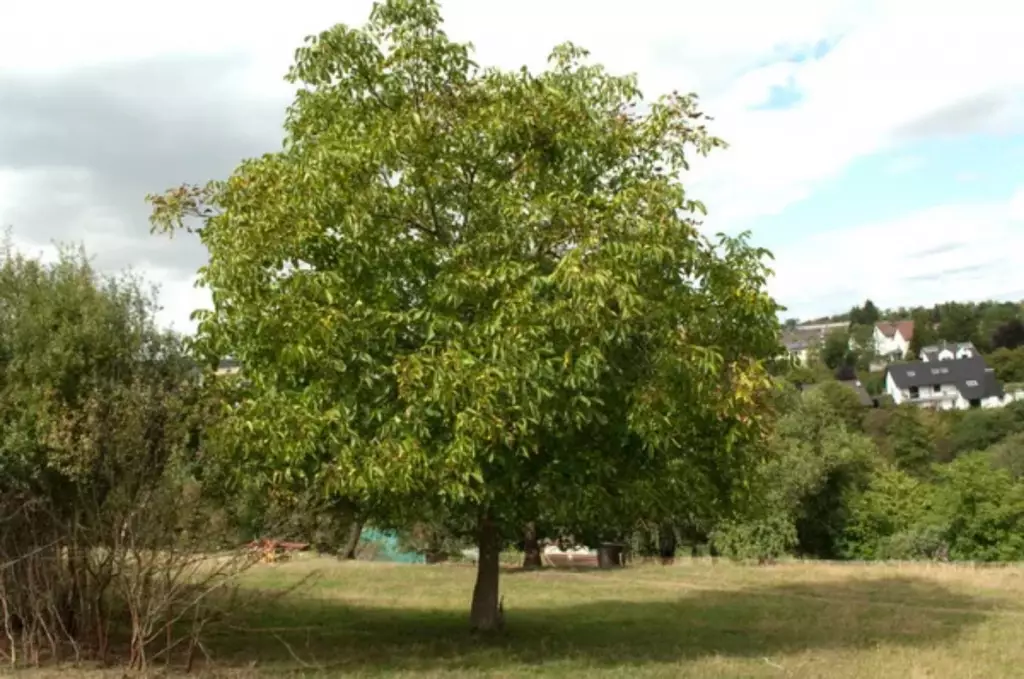
The Hartley walnut tree, also known as Juglans regia 'Hartley,' is a popular and widely cultivated variety of walnut trees. It is prized for its high-quality nuts, attractive appearance, and adaptability to various growing conditions.
It typically reaches a height of 40-60 feet at maturity, with a spread of 30-40 feet. The tree has a broad, rounded crown and a sturdy, upright growth habit.
The leaves of the Hartley walnut tree are compound, with 5-9 leaflets arranged in an alternate pattern along the stem. The leaflets are dark green and serrated, adding to the tree's ornamental value.
The tree produces large, high-quality walnuts that are prized for their rich flavor and nutritional value. The nuts have a thin shell and are easily cracked, making them ideal for culinary use and processing.
Fernor walnut tree has high productivity
The Fernor walnut tree, also known as Juglans regia 'Fernor', is a variety of walnut tree that is prized for their high-quality nuts and attractive appearance. This deciduous tree is cultivated for its delicious and nutritious nuts, as well as for its ornamental value in gardens and landscapes.
The Fernor walnut tree is known for its vigorous growth and high productivity. It typically reaches a height of 30-40 feet and has a spread of 25-35 feet, making it a substantial and impressive tree in the landscape.
The tree has a rounded, spreading canopy with attractive, dark green foliage that turns golden yellow in the fall, adding to its ornamental appeal.
The nuts of Fernor walnut trees are large, with a thin shell and a rich, sweet flavor. They are highly prized for fresh eating, baking, and cooking, making the tree a valuable addition to orchards and home gardens. They are also nutritionally dense, containing healthy fats, protein, and essential nutrients.
Apollo walnut trees are known for yielding large flavorful nuts
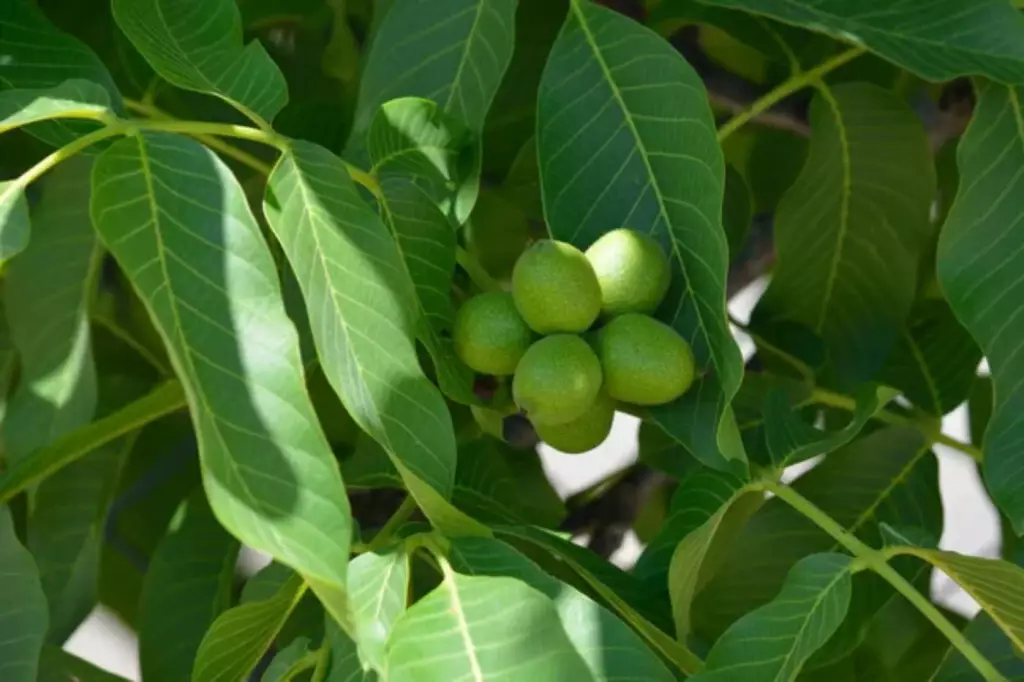
The Apollo walnut tree, as a cultivar of Juglans regia, exhibits several differences compared to other varieties of the species. The size, flavor, and texture of the nuts can vary significantly between different cultivars.
Some varieties may produce smaller nuts with a milder flavor, while others, like the Apollo, are known for yielding larger, flavorful nuts with a rich, buttery taste.
The Apollo walnut tree is also recognized for its strong, straight trunk and attractive foliage, as compared to other varieties which may have different growth patterns and leaf structures.
Furthermore, these trees are also known for their adaptability to various soil types and climates, but other varieties may have different preferences and requirements.
This walnut tree type is also prized for its durable, high-quality wood, but other cultivars may have distinct wood characteristics that make them desirable for specific uses.
Pedro walnut trees are highly adaptive walnut variety
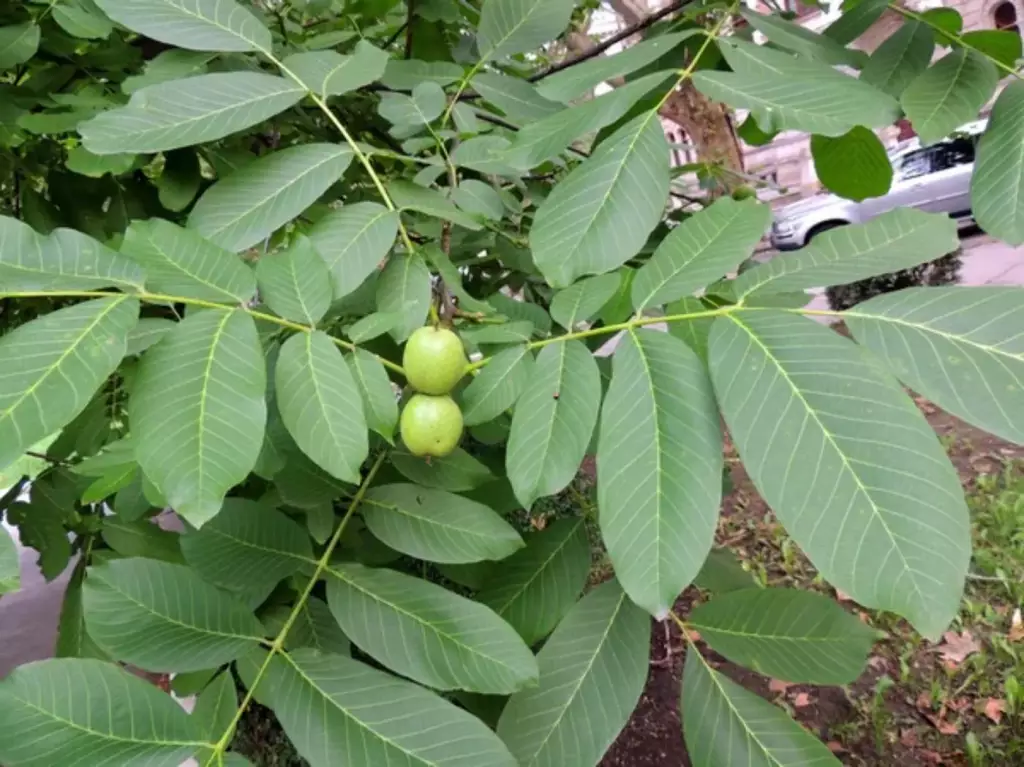
The Pedro walnut tree, also known as Juglans regia 'Pedro', is a unique and highly sought-after variety of walnut trees. It is known for its exceptional nut quality and high yields, making it a popular choice among walnut growers. The tree itself is medium to large in size, with a spreading canopy and attractive foliage.
One of the most distinctive characteristics of the Pedro walnut tree is its ability to produce large, thin-shelled nuts that are highly prized for their rich flavor and high oil content.
The nuts are typically harvested in the fall and are often used in baking, cooking, and snacking due to their excellent taste and texture.
In addition to its superior nut quality, the Pedro walnut tree is also valued for its adaptability to a wide range of soil types and climates. It is known for its hardiness and ability to thrive in diverse growing conditions, making it a versatile choice for orchardists in various regions.
As you research which walnut tree types are best suited to the climate and soil conditions of your planned orchard, it's important to consider not only yield potential but also growth rate, as choosing one of the fastest growing walnut species will allow you to more quickly realize profits from nut production and sales.
Lara walnut trees are highly-resistant to common walnut diseases
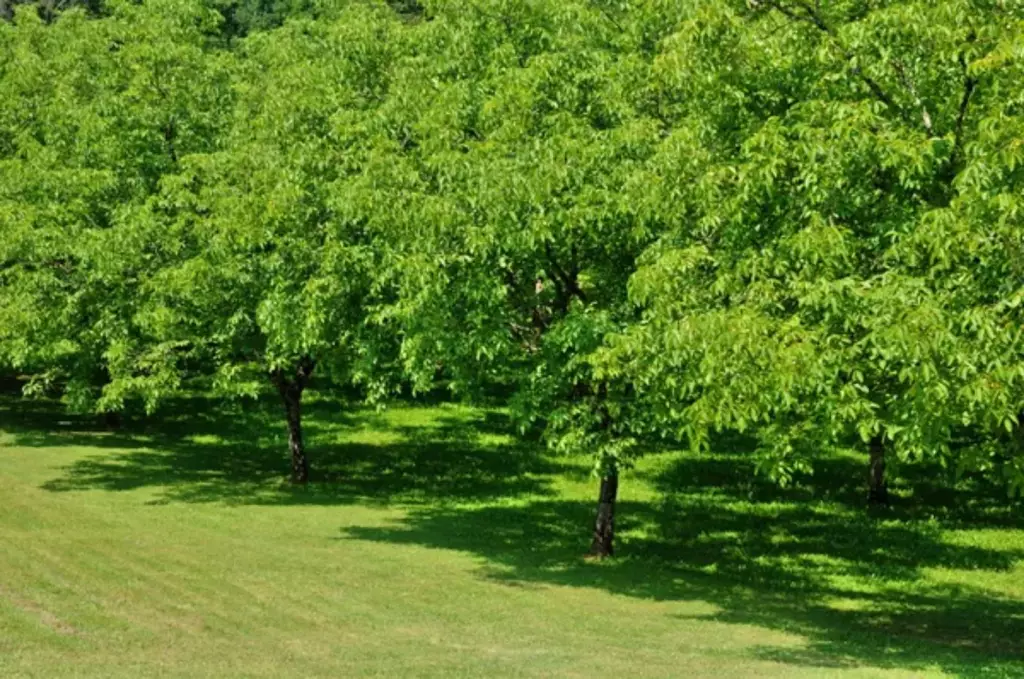
Lara walnut trees are prized for their abundant and high-quality nut production. The nuts are known for their thin shells and excellent flavor, making them popular in both culinary and snacking applications.
They can reach heights of 30-50 feet at maturity, making them a substantial and visually striking addition to the landscape. The foliage consists of large, dark green, pinnate leaves that provide ample shade during the summer months. The leaves turn a beautiful golden yellow in the fall, adding to the tree's ornamental value.
Lara walnut trees are self-fertile, meaning that they do not require a separate pollinator tree to produce nuts. However, having multiple walnut trees nearby can increase the overall yield through cross-pollination.
These trees are also known to exhibit good resistance to common walnut tree diseases, such as walnut blight and anthracnose, making them relatively low-maintenance compared to other varieties.


